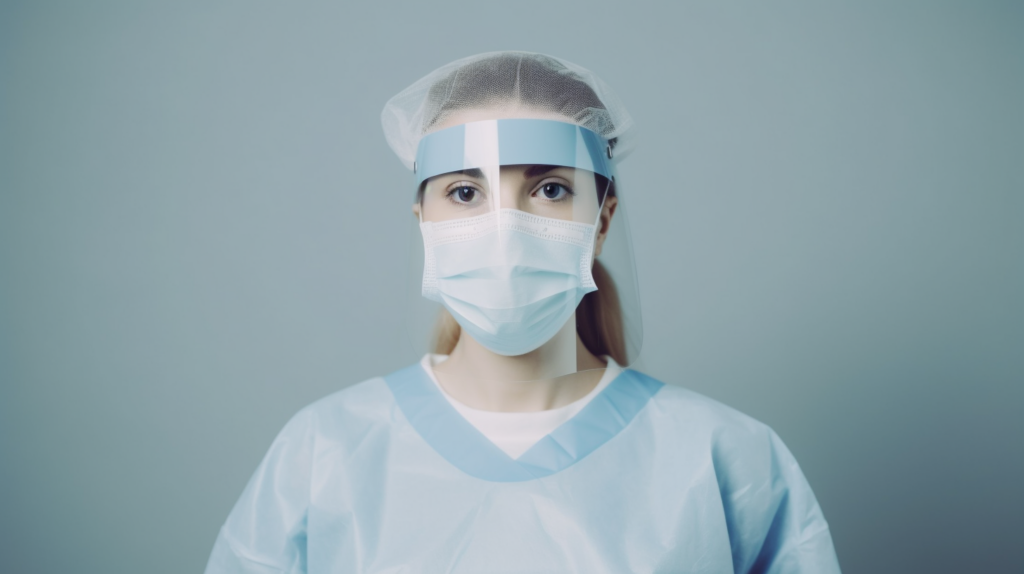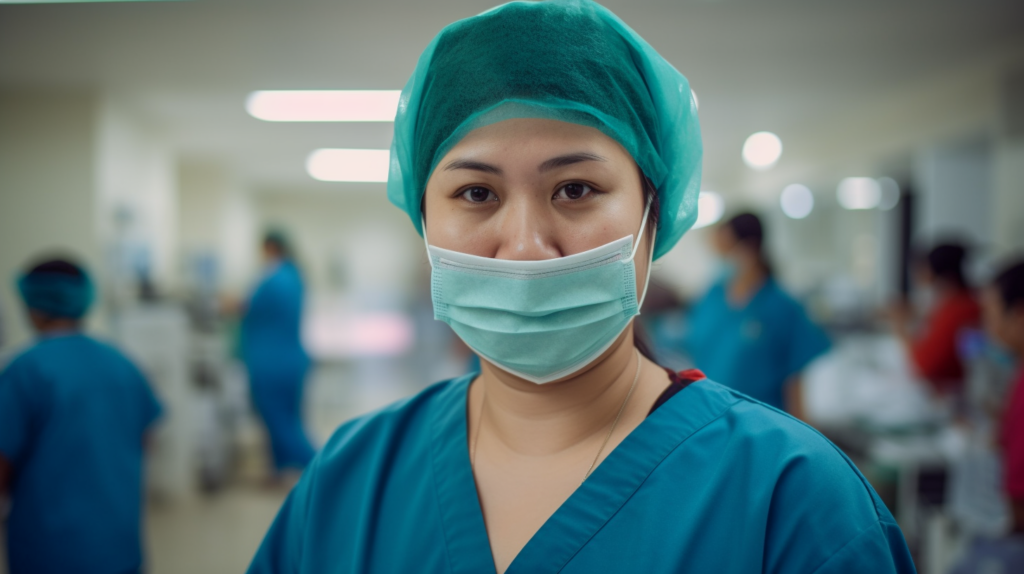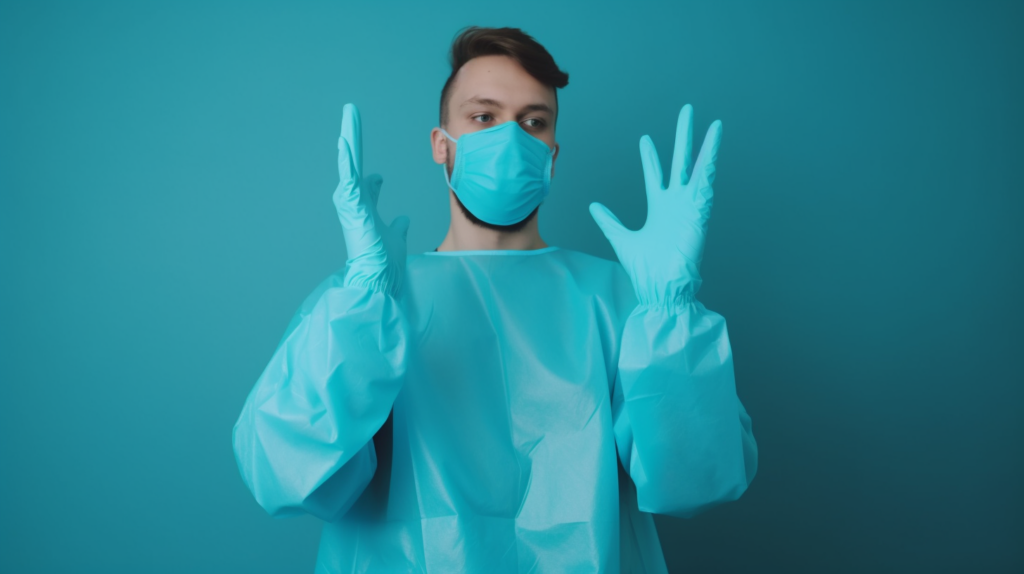Other Free NCLEX RN Study Guides:
There are 8 Modules in NCLEX RN Study Guide. Here you can navigate all the TEAS Study guide modules.
- NCLEX Study Guide Home
- Module 1 | Managing Care Of the Patient
- Module 2 | Overall Safety and Control of Infections
- Module 3 | The promotion of health and maintenance
- Module 4 | Integrity in psychosocial functioning
- Module 5 | Providing Basic Care and Ensuring Patient Comfort
- Module 6 | Therapies: Pharmacological and parenteral
- Module 7 | Potential risk reduction
- Module 8.1 | Adapting physiologically
- Module 8.2 | Adapting physiologically
- Module 8.3 | Adapting physiologically
Let’s get started right away.
Ensuring patients are safe in a medical facility.
Goals that impact patient safety are something that already has been set by the Joint Commission and they include:
- There must be steps in place to avoid mistakes with patient identification
- All communication given by caregivers must be measured, careful and accurate at all times to limit potential mistakes
- Ensure systems are in place to avoid medication errors, for example, the wrong patient getting another’s medication
- When a patient moves between facilities in the hospital, a reconciliation of medication takes place
- The risk of hospital-based infections must be as low as possible
- Fall prevention programs must be instituted and their overall effectiveness evaluated
Factors of patient safety in a medical facility
These include:
- Signaling staff education for patients
- Providing protection from falling as well as electrical hazards
- Assigning rooms appropriately
Mistakes in medication administration
Medication errors are a serious problem in the United States with over 7,000 deaths a year recorded by these mistakes.
There are ways to avoid them, however, including:
- Steering clear of symbols or abbreviations that are error prone
- Keep handwriting clear and make sure verbal orders are understood
- Making use of scanners and barcodes
- Educate staff by providing lists of medications that have similar names
- Institute policies that deal with drug verification and dosages
- Provide patients with information about their medications, which adds another layer of protection
Patient allergies and assessments
Determining the exact symptoms of a patient is a critical part of the process when assessing them for allergies.
Other information to determine is when their reaction started, the treatment they’ve used to deal with it before and if they have had any complications from treatment they have received before.
Patients can be allergic to many things including:
- Food
- Latex
- Certain environments
Deficits that compromise the safety of patients
Patients may have deficits that can affect their overall safety in a medical facility, particularly if they are unfamiliar with finding their way around, for example.
These include:
- Visual impairments: A patient could trip over something in their way for example
- Hearing impairments: A patient with hearing impairments may not hear certain danger signals, from alarms to smoke detectors
- Perceptual/sensory impairment: This can affect stroke victims for example, where they don’t feel any sensation on one side of their body.
Precautions when it comes to non-pharmacologic prescription
Things to consider here include:
- Supply of oxygen to a patient is administered at the correct levels as well as overall safety when using oxygen
- Using assistive devices, for example, a walker, in the correct manner
- Ensuring dialysis equipment is not contaminated
- The correct use of hot/cold compresses
Seizure precautions, especially for patients who have a history of seizures, should be set in place to ensure their safety.
These are a standard set of safety protocols that should be followed for these patients.
This can include ensuring beds are correctly padded, keeping them in a low position, and ensuring suctioning is kept nearby to be used if necessary.
Patient boarding
The process of patient boarding sees them stay in an emergency department after they are admitted as an inpatient.
This occurs when there are no beds available for them or staffing is inadequate in other wards.
This can lead to problems, however, because the ED can become overcrowded which is never ideal and can impact patient safety.
While boarding is a necessity at times, the patient should not be kept in the ED for a period of longer than four hours.
Should it not be possible for the patient to move out of the ED after that period, additional staff should be brought in to specifically care for any of these patients.
Fire safety: RACE
RACE is an acronym used for hospital fire safety and stands for:
- Rescue: Take all patients out of the area where the fire is situated
- Activate: Make sure the fire alarms are activated
- Confine: Used doors to try to confine the fire
- Evacuate/extinguish
Ergonomics
The final section to cover here deals with ergonomics and helping nurses prevent self-injury based on certain principles.
These include:
- Body mechanics in terms of correct body alignment for example
- Correct lifting procedures
- Avoiding repetitive movements
Emergency response plans and disaster management

All medical facilities need thorough disaster management and emergency response plans.
Disasters
Disasters can take many forms including:
- Natural
- Technological
- Human conflict
There is never just one type of disaster management plan.
No matter what type has been devised, however, their development comes about by following a few basic steps.
Each type of disaster management plan will have a planning team.
A disaster management plan timeline and other variables must be drafted by them.
These will include fees, costs, necessary resources, and others that ensure the plan is completed.
Following that, a start can be made on the analysis of potential disasters that the plan will have to cover.
This helps to identify just how susceptible the organization is to possible hazards.
Following that, a disaster response plan is drawn up.
Hazardous situations must be reduced and removed as part of this process.
Lastly, the plan is put into action and continually reviewed and updated.
Let’s also briefly touch on emergency response plans.
These plans can cover anything from natural disasters to bomb threats.
Elements of these plans include communication, resources, the assets on hand, how safety and security will be implemented, staff responsibilities, and how clinical activities will be supported, for example.
Casualty incidents: Multiple vs Mass casualties
Multiple casualty events include:
- An incident involving three or more people
- An incident in which one to three services (police, fire department, ambulance) and one jurisdiction is involved.
- An incident in which triage is necessary. This is usually only primary triage
- Patients that are not deceased are transported to care facilities with all standards of care being met
Mass casualty events include:
- An incident in which multiple services are involved and which involves multiple jurisdictions
- Triage (including secondary triage) takes place according to color codes and with specific waiting areas
- Patients not expected to live can receive delayed care as priority is given to transport read and yellow triaged patients
Triage principles
Primary triage includes the following classifications:
- P1 – Red: These patients will need care immediately and are currently experiencing life-threatening conditions. This could include severe burns, breathing problems,
- P2 – Yellow: Treatment can be delayed but not by more than 45-60 minutes.
- P3 – Green: Only minor injuries so can wait long periods for treatment, if necessary
- P4 – Black: Extensive injuries and not likely to survive or already deceased
Terrorism
Terrorism is a real threat that medical facilities must prepare for.
Note the B-NICE hazardous materials incidents linked to terrorist attacks.
It breaks them down as follows:
- B: Biological (toxins, fungi, viruses, or bacteria)
- N: Nuclear/radiological
- I: Incendiary
- C: Chemical
- E: Explosive
Disaster planning and management: Disaster recovery
When talking about disaster recovery, it refers to the final stages of disaster response.
This will be divided into two phases:
- Restoration period: This is the first phase of the recovery step. Here, the area in which the disaster took place is ensured to be safe and secure, services are restored and utilities fixed, any wreckage that remains is taken away and people who were evacuated can return
- Reconstruction period: This takes over a long period of time and sees the area that the disaster affected restored to how it once was beforehand. Economically, it returns to normal as well
Security plan
Last, we look at a security plan.
When a security breach at a healthcare facility takes place this is the plan that will be put into action to help ensure the safety of both staff and patients.
There are various components to consider for a security plan including:
- Security workers: Who protect the facility
- Silent alarms: To alert security when necessary
- Locked units: To enter these, access codes are required, for example, a psychiatric unit
- “Do not acknowledge patients” which are those where information, including confirming if they are in the facility or not, cannot be given to others
- Announcements: Using codes to alert to emergencies or threats
- Security in newborn nurseries: This includes various security measures to secure and protect newborns
- Violence prevention: This includes staff education, alarm systems, access control, and more
- Controlled access: This is not only using locked areas but includes access control by fingerprint or card and other measures
Security plan evacuation principles must include:
- What conditions should be present for an evacuation to be triggered?
- Who is in the decision making chain of command?
- What procedures are in place for evacuations?
- What procedures are in place to assist patients (including those who might not understand or speak English)?
- What procedures are in place to decide who is responsible for shutting down critical operations?
- What procedures are in place to track staff and patients?
- Are there transporting plans in place to move staff to other facilities?
Handling hazardous materials
Handling and administering hazardous materials is something that nurses may have to deal with during the course of their workday.
They can come in various forms too, while hazardous wastes need to be placed in special containers in the medical facility.
A plan that deals with how hazardous materials are to be handled should be in place in all medical facilities.
This includes:
- Ensuring that staff receive the correct training regarding the safe handling of these materials with the training repeated at least once a year
- Providing the correct PPE equipment to protect staff when handling these materials
- Ensuring that for identification purposes, hazardous materials are labeled clearly
- Ensuring that hazardous materials are stored correctly
- Ensuring that all hazardous materials include safety data sheets
- Ensuring that decontamination procedures are in place. This includes areas where someone exposed to hazardous materials can shower as well as eyewash stations
- Ensuring that any accidental exposures are recorded and reported
In terms of biological waste, this must be disposed of in hazardous waste containers.
Those that may be contaminated or infected must be treated with a hypochlorite solution to deactivate it.
It’s also important to be aware of the ways in which the body could be entered by biological hazards.
This includes:
- Into the lungs through the nasal passage (airborne)
- Eating or drinking (ingestion)
- Through skin that’s broken or even wounds (subcutaneous)
- Through skin that’s intact (percutaneous)
- Through mouth and nose lining (Mucosal)
Controlling infections

Let’s move on to infection control.
Nosocomial infections
Infections that are hospital-acquired are known as nosocomial.
The most common are:
- Enterococci
- Enterobacteriaceae
- Escherichia coli
- Group B Hemolytic Streptococci (GBS)
- Staphylococcus aureus
- Methicillin resistant Staphylococcus aureus (MRSA)
- Clostridium difficile
- Candida
- Aspergillus
We won’t go into great detail about each one in terms of what types of infections they can cause as this will be covered in your coursework, it’s just important that you are aware of them
Infections related to catheter use
In medical facilities, catheter infections can cause significant problems.
They can result from fungal infections, like Candida, or from Staphylococcus aureus and enterococcus.
Because these infections can lead to superficial thrombophlebitis, septic shock, osteomyelitis, septic pulmonary emboli, bacteremia, and infective endocarditis, nurses need to be vigilant when patients use catheters.
Control measures for infections
To prevent the transfer of microbial substances between medical staff and patients, standard infection control measures are put in place in medical facilities.
This includes regular handwashing, wearing gloves where necessary, and other uses of PPE like gowns and face shields.
Since tiny droplets last in the air for an extended time, airborne precautions are also necessary when treating patients with TB, SARS, and Covid-19.
This can be combated through the use of N95 masks as well as putting patients in negative pressure rooms.
Gloves, gowns and contact precautions should be in place when dealing with infections that can be fecally transmitted.
Infection control plans
The following should be part of any infection control plan:
- Lowering the rate of infection
- Assessing infection control measures and evaluating them
- Defining endemic threshold rates
- Detecting and identifying outbreaks
- Getting staff buy-in and compliance
- Conforming to standards of accreditation
- Defending malpractice lawsuits
- Comparison of infection rates between medical facilities
Needlestick injury protocol
Needlestick injuries occur in hospital settings, that’s a given.
If this does occur, the first thing that needs to be done is that the wound is washed with water and soap.
After reporting the incident to the relevant supervision, the needlestick injury protocol should be followed.
In line with the health history of the patient, this could include the necessary testing being carried out as well as prophylaxis.
Infections of a viral nature

These are covered in your coursework, so we aren’t going to get into too much detail in this guide, other than to alert you to those that appear on the exam.
Herpes simplex
Two types of herpes simplex infections are common:
- HSV-1: This takes the form of fever blisters or cold sores. It is through close contact that HSV-1 is transmitted.
- HSV-2: Is transmitted through sexual contact and takes the form of genital lesions which are extremely painful.
Epstein-Barr infections
EBV causes infectious mononucleosis and is a herpesvirus that is transmitted through body fluids.
It can remain dormant in epithelial and B cells after the initial infection.
EBV is linked with Burkitt and Hodgkin lymphoma and other epithelial and lymphatic neoplasms.
Rubella, measles and mumps
Rubella is commonly known as German measles and it usually occurs in spring where it is spread via respiratory droplets.
Mumps or parotitis is also spread via saliva and takes the form of a viral infection.
Measles or the rubeola virus occurs usually between the end of winter through spring and it’s through respiratory secretions that it is spread.
Make sure you read through your coursework to understand how these manifest in patients and what treatment is necessary.
Influenza
The entire respiratory system can be affected by this viral infection which is highly contagious.
Influenza comes in three forms: Type A, B and C with C being the least common and not as severe as the first two.
Complications from influenza include pneumonia, ARDS, and death.
Coronavirus
Since early 2020, medical facilities around the globe have had to deal with Coronavirus.
This manifests itself much in the same way as a cold might back can cause those suffering from it to become extremely sick.
Most medical facilities will have strict protocols in place for dealing with Coronavirus and these should be followed at all times.
Fifth disease
Also known as erythema infectiosum, Fifth disease is caused by parvovirus B19 and takes the form of a viral illness.
It usually causes outbreaks in younger children and is more likely to occur in spring.
Chickenpox
This affects children under 10 and takes the form of a viral infection which takes place between late winter and early spring.
Respiratory Syncytial Virus
This affects the respiratory tract.
Those suffering from RSV will have a headache, sore throat, severe congestion of the nasal passages, and a cough.
In severe cases, RSV can lead to high fevers and difficulty breathing.
Rotavirus
This occurs in children and will manifest in the form of diarrhea, vomiting, and fever.
Rotavirus is very contagious and can run like wildfire through daycare centers and preschools, for example.
Three other viral infections that you should spend some time looking at in your coursework are Rosela, Poliomyelitis, and Cytomegalovirus.
Infections of a bacterial nature

The content of these is covered in your coursework, so we won’t discuss them in great detail here, other than to alert you to those on the exam.
Scarlet fever
This is found in schoolchildren and occurs during spring, winter, and fall.
Scarlet fever is a result of Group A beta-hemolytic streptococci.
It results in a high fever, sore throat, and chills and can even lead to stomach pain and vomiting.
Diphtheria
Occurring mostly in fall and winter, this is the result of Corynebacterium diphtheria.
It results in airway swelling, a lack of appetite, a general unwell feeling, sore throat, discharge from the nose, and a mild fever.
Whooping cough
This mostly occurs in children that have not received their immunization and is a result of Bordetella pertussis bacillus.
Whooping cough starts out with cold symptoms but eventually, the cough itself makes a “whoop” noise, hence the name.
Children can also vomit if they experience a long round of coughing.
Tetanus
This is caused by Clostridium tetani and the spores from this can be found in dust and soil but also in humans and animals where they occur in the GI tract.
Patients that have been bitten by a dog, for example, would require a tetanus shot.
Symptoms include headaches, and a sore jaw and in severe cases, patients may not be able to open their mouths at all.
Further symptoms can include seizures, back spasms, fever, and even incontinence.
Infections of a fungal nature

As these topics are covered in your coursework, we won’t go into them too much.
Cryptococcosis
When the Cryptococcus neoformans fungus is inhaled, this fungal infection can result.
The fungus itself is mostly found in bird droppings.
Symptoms include cough, chest pains, weight loss, and fever but also can include headaches, double vision, sensitivity to light, and confusion.
Cryptococcal meningitis, optic nerve damage, hydrocephalus, and neural defects can arise from complications caused by Cryptococcus.
Histoplasmosis
When spores from the Histoplasma capsulatum fungus are inhaled, this fungal infection can result.
Bird and bat droppings are the main carriers of this fungus but usually patients that are healthy are generally asymptomatic.
It is a concern, however, for those who have Histoplasmosis and are immune compromised.
Generally, those carrying this fungus will present with flu-like symptoms.
Pneumocystis
This fungus can cause PJP pneumonia and is of the utmost danger to patients that are immunocompromised.
Fever, a dry cough, dyspnea, and weight loss are the symptoms that most patients with PJP exhibit.
If not treated, complications include ARDS and even death.
Candidal infections
There are a variety of infections that fall under this banner including:
- Oral thrush: Easily notice by white patches on the tongue
- Candida esophagitis: This can result in chest pains, odynophagia, and dysphagia
- Candidal intertrigo: This is basically diaper rash
- Candidemia: If untreated this can result in endocarditis, osteomyelitis, and other problems
Infections of a parasitic nature

There are a range of parasitic infections that you should know about.
Malaria
Transmitted by mosquitoes, Malaria is a disease that is carried in the blood with symptoms including high fever (including chills and sweating), headaches, anemia, jaundice and hepatosplenomegaly.
It’s usually treated with chloroquine while complications if untreated range from acute anemia, failure of the liver, spleen and kidneys, cerebral malaria, ARDS, and even death.
Lyme disease
This is a disease that can result from a deer tick bite.
Lyme disease has three stages:
- Stage 1: Symptoms include fatigue, fever, myalgias, chills, and a red rash that expands.
- Stage 2: This occurs weeks or even months after the initial bite and results in a stiff neck, headaches, muscle and joint pain, rashes, Bell’s palsy, confusion, heart palpitations, and myocarditis
- Stage 3: A person with Lyme disease will only enter this stage after a period of months and possibly years. Symptoms include rheumatologic and neurologic issues.
Zika virus
Transmitted by mosquitoes and through sexual contact, pregnant women exposed to this virus will show symptoms that include headaches, fever, myalgias, arthralgias, rashes, and conjunctivitis.
This can lead to congenital effects in their babies and currently, there is no cure for this virus.
Helminth infestations
These infestations are a variety of worms that include:
- Roundworms: Cause anemia
- Filariae: Cause elephantiasis
- Flatworms: Cause weight loss
- Flukes
- Pinworms
Other parasitic infections
Your coursework will include information on two other parasites, Giardia Lamblia and Toxoplasmosis that you should also familiarize yourself with.









